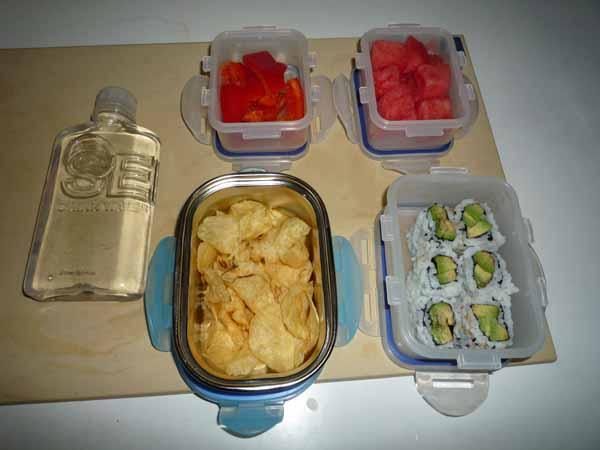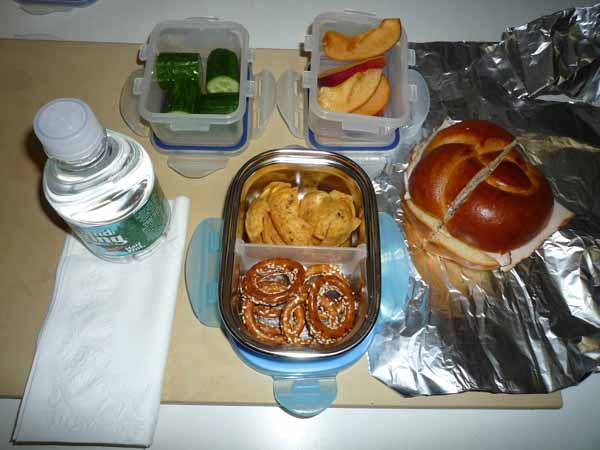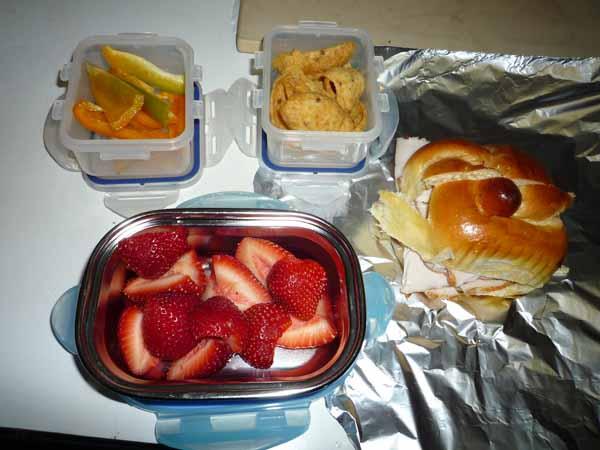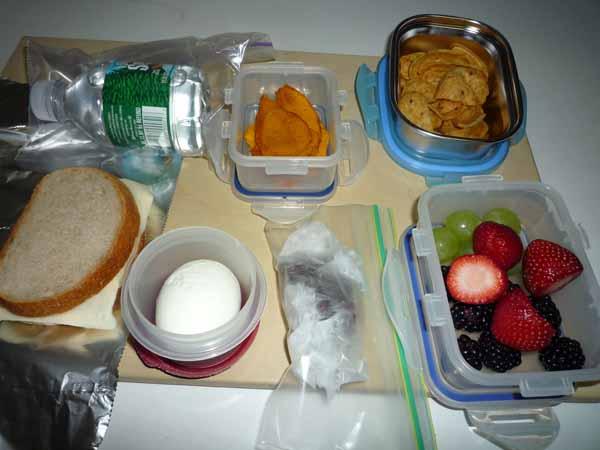-
Posts
28,458 -
Joined
-
Last visited
Content Type
Profiles
Forums
Store
Help Articles
Everything posted by Fat Guy
-
I'm not sure where the number 5 comes from -- I'm sure for some people it's 4, for some it's 6, and for it's 0 -- but I do agree that there's a phenomenon whereby most home cooks who cook fish understandably favor a small group of products. Even a fairly ambitious home cook is likely to hesitate before purchasing and cooking a new, untested fish when it's possible to buy something that is known to work. It's the same with meat: you just don't see much beyond beef, pork, chicken, turkey and maybe lamb. Mass-market restaurants for their parts tend to track consumer preferences.
-

All the reasons we can think of to have commercial fryers at home
Fat Guy replied to a topic in Kitchen Consumer
My guess is that, all fats being equal, food fried in a commercial deep fryer is better for you than food fried under typical home conditions. The large volume of oil and powerful heating elements mean you get much less of a temperature drop when you add. This in turn should mean the food absorbs less oil. It also means it comes out better. But the property that makes a commercial deep fryer superior -- its large volume -- is exactly what makes it impractical for normal home use. It's also an expensive, bulky item. Sort of like a wood-burning bread oven. In days of yore, there were communal ovens and the people in the village brought their loaves and other things to the ovens to cook. Perhaps that approach would also make sense for deep fryers. -
Assuming regular yogurt, as opposed to Greek-style low-moisture yogurt, I consider it nearly a liquid. It takes a quart of milk to make a quart of yogurt, I figure, so there's no significant water loss, but just to be safe I add a couple of extra tablespoons of real liquid when I use yogurt.
-
Jacques Torres and Francois Payard come to mind right away. I think some of the former top pastry chefs who are now less prominent have gone that route by choice. Claudia Fleming, for example, moved to the North Fork of Long Island with her husband Gerry Hayden (a chef) and they're now living a different kind of life. Between Gramercy Tavern and North Fork Table & Inn, Claudia Fleming took a position with Pret a Manger. While it didn't develop into mega-corporate success, it probably had that potential. Then there are some ventures that are probably more baking than pastry, but we don't make such a firm distinction here. For example, you have a place like Sarabeth's. Or Magnolia bakery for that matter. I live across the street from the uptown Magnolia and there are people from all over the world lining up for those stupid cupcakes. I don't really know the backgrounds of the Magnolia people, though. They may or may not be pastry chefs.
-
For several years, I've been using vinegar to boost acidity in many dishes. A little red-wine vinegar in a batch of lentil soup, or a little cider vinegar in chili, is like turning up a setting on the flavor equalizer that is normally left too low. Yet, when I tell people I've added vinegar to something, they're almost always surprised. We've touched on this issue here and there, but now I want to put it out there: people generally cook with too little acidity, and vinegar is the easiest way to increase acidity in most cooking
-
In my limited experience they behave exactly the same.
-
They must figure those people are going to buy fancy blenders anyway, so the extra audience at the margin is the Middle American semi-homemade-type cook. Or it may just be that nobody at the company, which is based in Utah, knows squat about cuisine. You can see a hint of this in their choice of chefs for their demo videos (which used to be online but are now only on the DVD that comes with the unit): I wouldn't want these guys to cook anything for me.
-
There must be a lactose-intolerant person in a position of power at Blendtec because they use a lot of non-dairy creamer throughout the book and in their live demos. Likewise, many recipes seem fine as you're reading along until you come to some crap ingredient like Tang, taco-seasoning mix, or instant vanilla pudding powder. What you have to be able to do is back it all out to the underlying liquid-solid ratios and then use your own ingredients to get something acceptable.
-
Speaking of ratios, I dramatically improved my frozen desserts recently by using the ratios in the Blendtec recipe book. Measuring by volume: 2:1:3/4 frozen fruit:liquid:ice. So for peach ice cream it's 2 cups of frozen peaches, 1 cup of milk, 3/4 cup of ice cubes (plus a dash of vanilla and however much sweetener of whatever kind you like). If you do it that way it really comes out like at the demo at Costco.
-
The Blendtec recipe book is so bad it's alarming. If it reflects American tastes, I never want to let anybody from another country see it. I'd be too embarrassed. The only thing I use the book for is to get an idea of general ratios. For example I could see in the traditional cheese fondue recipe that they used a certain amount of liquid and a certain amount of cheese. So I started from there, because it does seem they test their recipes and the ratios of solids to liquids seem to be the key to good results in the Blendtec. I also find that with soups and other hot items you need 2 or 3 cycles to get it to a decent temperature.
-
Faced with an abundance of cheese I decided to make fondue for lunch today. As was assembling my ingredients, my son asked if I was going to make it in the Blendtec. I guess he had been paying more attention during the Costco demo than I, because right there on the machine it says "fondue" on one of the buttons. There's also a whole fondues chapter in the cookbook that comes with the unit. Well I'll be a monkey's uncle if the Blendtec doesn't produce the smoothest, creamiest fondue ever. No need to use the stove, stir or anything. If you're going to serve it the regular way you'll need a fondue pot, but we just ate it out of the Blendtec pitcher and when it started getting lukewarm gave it another 45 seconds on the machine.
-
Alex, let me assemble some info and confer with you in a sidebar later on today.
-
I've been tweaking my stock over the years and I think the primary lesson I've taken away is that better chicken makes better stock. I don't think it's realistic to use fancy chickens for routine stockmaking, but I've found a good compromise: The place I shop, Fairway, started selling Murray's backs and necks for cheap. So there you have a higher-quality brand than I'd normally use for stock, and they give you the part of the chicken that I think is best for stock. The way they butcher them they have plenty of meat attached so you can use them to drive the whole stock, which comes out very rich without any off flavors.
-
In the past I used a paring knife for many of the tasks that have been referenced above. But for the past 3 months, living in temporary quarters with only one sharp knife, I've done pretty much everything with a Forschner 10" chef's knife. There are a few tasks where I thought the chef's knife was a little bit clumsy and unwieldy, but that could be my lack of a steady hand as much as anything else. And for the small quantities of stuff used in most home cooking it probably takes more time to switch knives than you lose by just powering through everything with the big chef's knife. For home cooking I'd never tourne a carrot or anything like that. For strawberries I use a straw poked up through the center, but ever since I got a high-power blender I've stopped hulling them for smoothies which are my primary use for strawberries (though most of the year frozen are better).
-
PJ just finished up a week of day camp at the Central Park Zoo. The night before camp Ellen was like, "What are you going to pack him for lunch tomorrow?" And I was like, "He gets to bring lunch?" Anyway, I got an unexpected, extra week (four days actually) of lunch practice.
-
I recently passed the 100-cycles mark on the Blendtec. I'm confident now that I prefer it to the Vita-Mix, and probably to any tamper-dependent machine made by that company. Once you get the hang of the Blendtec -- and I should emphasize that there is a learning curve with all these machines -- you can do most any task without the need to tamp, stir, stop, knock, anything. That to me is such a significant difference that it ends my decision-making process. (That being said, Blendtec should offer a tamper anyway because there are situations in which it makes sense to use one, such as with an herb puree.) I also prefer the Blendtec's size. When you consider that the Blendtec and Vita-Mix containers hold the same amount, and that the Blendtec's motor is more powerful, it's pretty nice that the Blendtec fits under standard-height wall cabinets. And I like the container material that Blendtec uses. The Vita-Mix container just feels cheap. On the other points of differentiation, I have no strong feelings. There are advantages and disadvantages to electronic controls. The program cycles are nice but my life would go on just fine without them, and the lack of analog controls on the Blendtec creates minor annoyance when you just want to blend on 10. Both units are very loud. I don't know which is louder -- a lot of people say Blendtec is louder but I'm not sure -- but since I wear earplugs when I use the thing I don't really care about a slight difference in noise level. The Vita-Mix has at least a superficially better build quality but I don't know how that works out over time or if there's really anything to it. A side note: I just got an email notice from Vita-Mix that the 5200 is now available in a stainless finish.
-
I just bought a loaf of "whole wheat" bread at a farmers' market and, upon cutting into it, I can tell that it's about 90% white flour with a sprinkling of whole-wheat flour. This is also the case at a lot of bakeries, and with virtually all supermarket bread labeled "whole wheat." With rye bread it's even worse. I'm sick of it. I wish producers would label their breads the way dairy products are labeled, with white flour by percentage. I think a lot of people would be interested to know just how bogus their supposedly whole-grain products are.
-
I promise not to cancel. If I'm alive in August, I'll be there. Please keep me as a maybe for anything on Friday morning. One of our potential sponsors has offices near A2 so I may have to make a side trip. I'll let you know for sure one way or the other.
-
I think one implicit claim by a lot of folks here is that consumer recipes, while generally well tested at least when they appear media that test, tend to be lowest-common-denominatored in various ways that a lot of experienced cooks correct on the fly. I'm having trouble conceptualizing why a mistake gets amplified if you scale up the recipe. If you use 10% more of X, don't the ratios stay the same whether you make 1 batch or 10?
-
I defer to your experience, as I have only a couple of data points: My standby cornbread recipe, from the CIA Pro-Chef book, calls for 255 grams of eggs, lightly beaten. All the recipes in that book, at least in that edition, seem to use weights for eggs. And a few years ago I spent some time in the pastry kitchen at the St. Regis hotel and they measured eggs by weight, though that was liquid egg product. I wonder what the variation is in the weight of a dozen large eggs. Weighing has got to be more accurate.
-
But a professional formula will typically call for a weight measure of eggs. So it doesn't matter what size you use. You just keep cracking eggs into the bowl until you hit the target number of grams. Also, the role of a standardized set of instructions in a commercial kitchen is to insure consistency from cook to cook, so for example in a restaurant it means the chef's dish will come out of the kitchen no matter which prep cook is preparing it and which line cook is cooking it. But I doubt any restaurant chef would use a cookbook recipe without modifying it in many of the same kinds of ways we've been talking about here.
-
Like I'm carrying around a bunch of extra water weight. Of course I'm always doing that, but it's over and above my baseline.
-
If you're talking about the specific condition of abdominal bloating, I think that's more of a gas and digestion thing. If you're talking about what people generally mean when they say they're feeling bloated, they mean they're retaining fluids, which is certainly caused by salt. There's no scientific disagreement on that point that I'm aware of, and I think Google amply illustrates common usage.
-
What's the argument for sifting? There are plenty of credible sources saying it's usually a waste of time. While I'm willing to believe that there are certain recipes where sifting might make a difference, I'm also sure that most of the time the instruction is not worth following. Especially when dealing with older cookbooks, written at a time when flour production was different, it's eminently ignorable advice. Just a couple of citations... Better Homes & Gardens: Rose Levy Berenbaum says sifting is not necessary if you weigh your ingredients: http://www.realbakingwithrose.com/2006/03/is_it_really_necessary_to_sift.html
-
I'm pretty sure it does. If you google sodium and bloating you'll get a zillion or so results.





